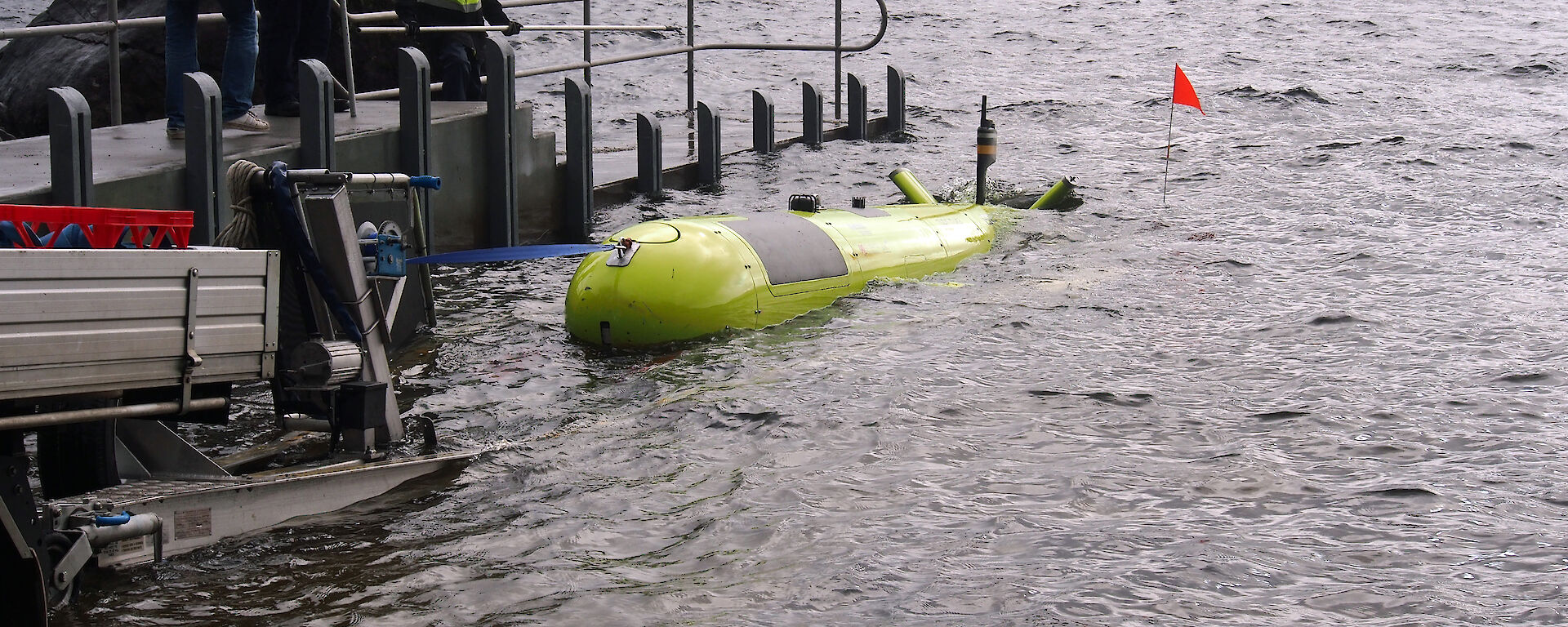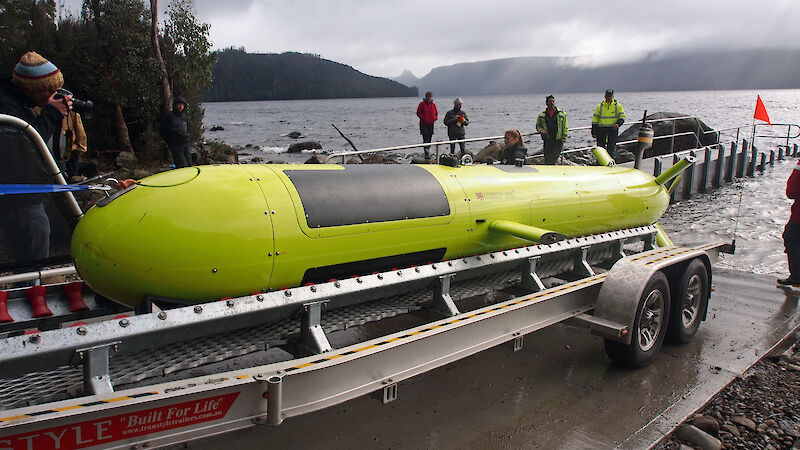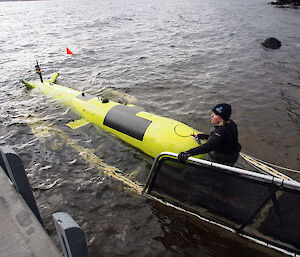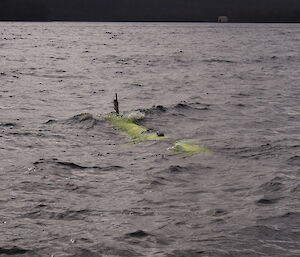A high-tech lime green submarine was tested in Australia’s deepest lake this week, as it prepares for its first Antarctic mission later in the year.
A team of Australian Antarctic Program scientists, and engineers took the seven metre-long, 1600kg autonomous underwater vehicle (AUV) through its paces at Lake St Clair in Tasmania’s highlands.
Managed by the Australian Maritime College, the International Submarine Engineering Explorer class AUV, which can dive up to 5000 metres and travel over 140km under metres of thick ice, was purpose-built for Antarctic and Southern Ocean research in 2016.
At Davis research station this summer a team will deploy the torpedo-shaped AUV from the shore and travel alongside it in a small boat to the Sørsdal Glacier, about 11km south-east of the station.
Once at the glacier they will use a range of on-board sensors to survey the front of the ice shelf and, all going well, venture beneath the ice shelf, with increasing distance and duration as the vehicle performance is assessed.
The team will also map the shape of the sea floor around and beneath the glacier, the shape of the underside of the ice shelf and collect water samples.
AUV Science Coordinator, Associate Professor Guy Williams, from the University of Tasmania, said the trials at Lake St Clair were part of 12 months of proving work around Tasmania and in Bass Strait, in preparation for the Antarctic mission.
“August at Lake St Clair is the closest we can come to simulating Antarctic conditions,” Associate Professor Williams said.
“Running 10-plus kilometre missions at over 100 metres depth is precisely what we have to achieve at the Sørsdal Glacier. So this is really a full dress rehearsal for the vehicle, engineers, boat operators and science team that will fine-tune the vehicle deployment and recovery, and data analysis procedures, for this technically challenging project.”
If the AUV performs well beneath the Sørsdal Glacier, scientists hope to launch it beneath other, larger ice shelves, such as the Totten and Amery ice shelves, to study the interaction of the ocean with the base of the ice shelves and its effect on ice shelf melting.
The AUV is funded by the Australian Government through the Antarctic Gateway Partnership — a $32 million Special Research Initiative of the Australian Research Council that aims to provide new insights into the role of Antarctica and the Southern Ocean in the global climate system. The Australian Maritime College, University of Tasmania contributed $3 million to the cost of the vehicle.





